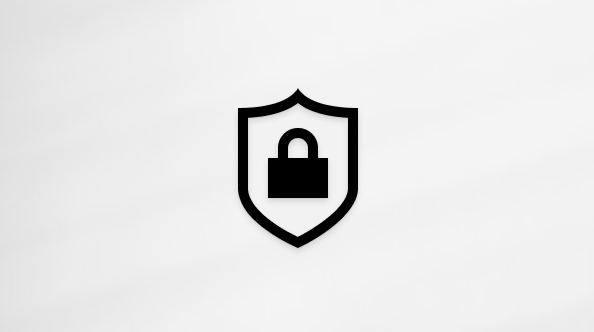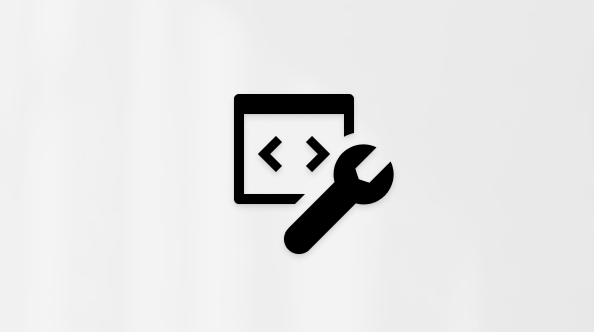When you've finished editing, easily export and download your video as an MP4 file to your device. You can also share your video directly from the exporting page to one of our saving integrations.
In Clipchamp for personal accounts, as you work on a video, editing progress gets saved automatically and there is no save button you have to click.
When you're ready to finish and export your video, follow the steps below.
Step 1. Click on the export button
To save your video, click on the export button at the top right corner of the video editor.
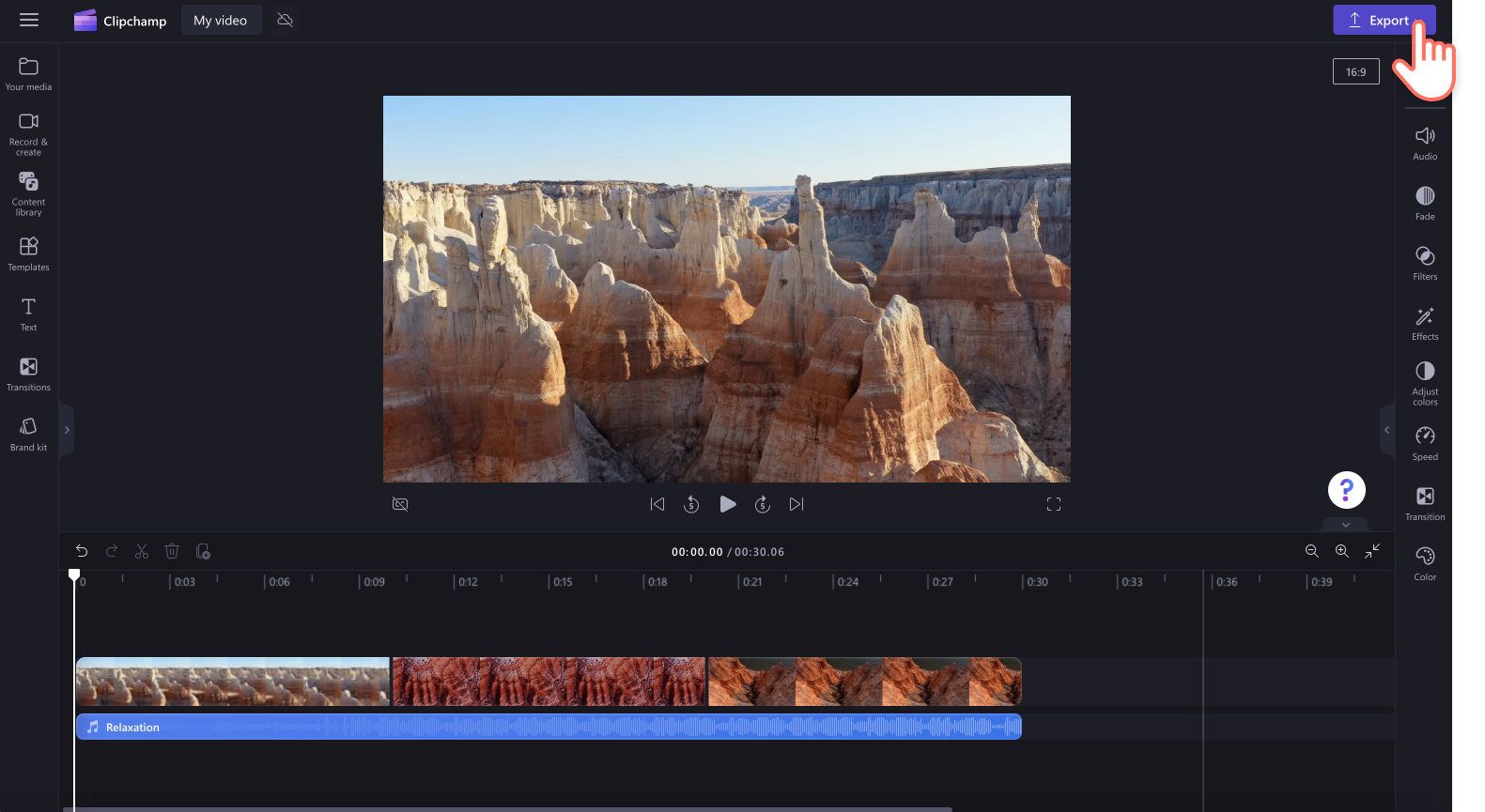
Step 2. Choose a video quality to export
A drop down window will appear with video qualities. Your video will export as an MP4 file in one of the video resolutions you choose. Select from:
-
480p video quality is suitable for drafts.
-
720p video quality is suitable for social media videos.
-
1080p (HD) video quality is suitable for video streaming platforms and presentations.
-
4K (UHD) video quality is the best video resolution for all 4K media files.
-
GIF for videos 15 seconds or less.
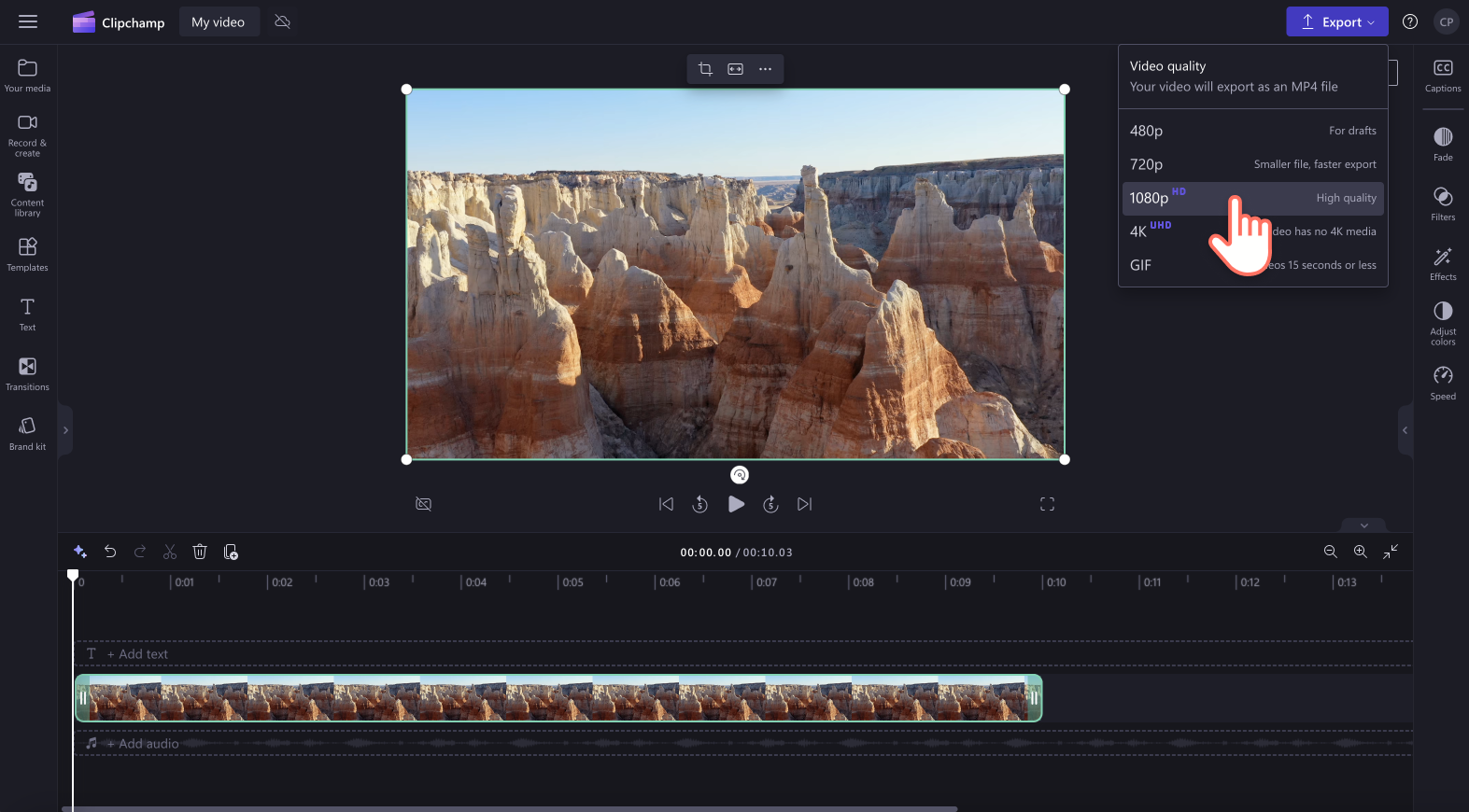
If you've used a premium feature and are on the free plan, you'll see diamond-shaped symbols next to the exporting options. If you're not ready to upgrade, remove the premium features before exporting the video. To export your video including the premium features in it, select the switch to a new plan button. This will guide you through the steps to upgrade to the premium plan.
Step 3. Save and share your video
Once you have selected a video resolution, your video will automatically start exporting and you'll see a progress bar with a percentage indicator.
Here, you can also share your video using one of our sharing integrations. Select from the following options
-
Save to OneDrive
-
Save to Google Drive
-
Upload to YouTube
-
Send to TikTok
-
Save to Dropbox
-
Share to LinkedIn (only works for company accounts, NOT personal accounts)
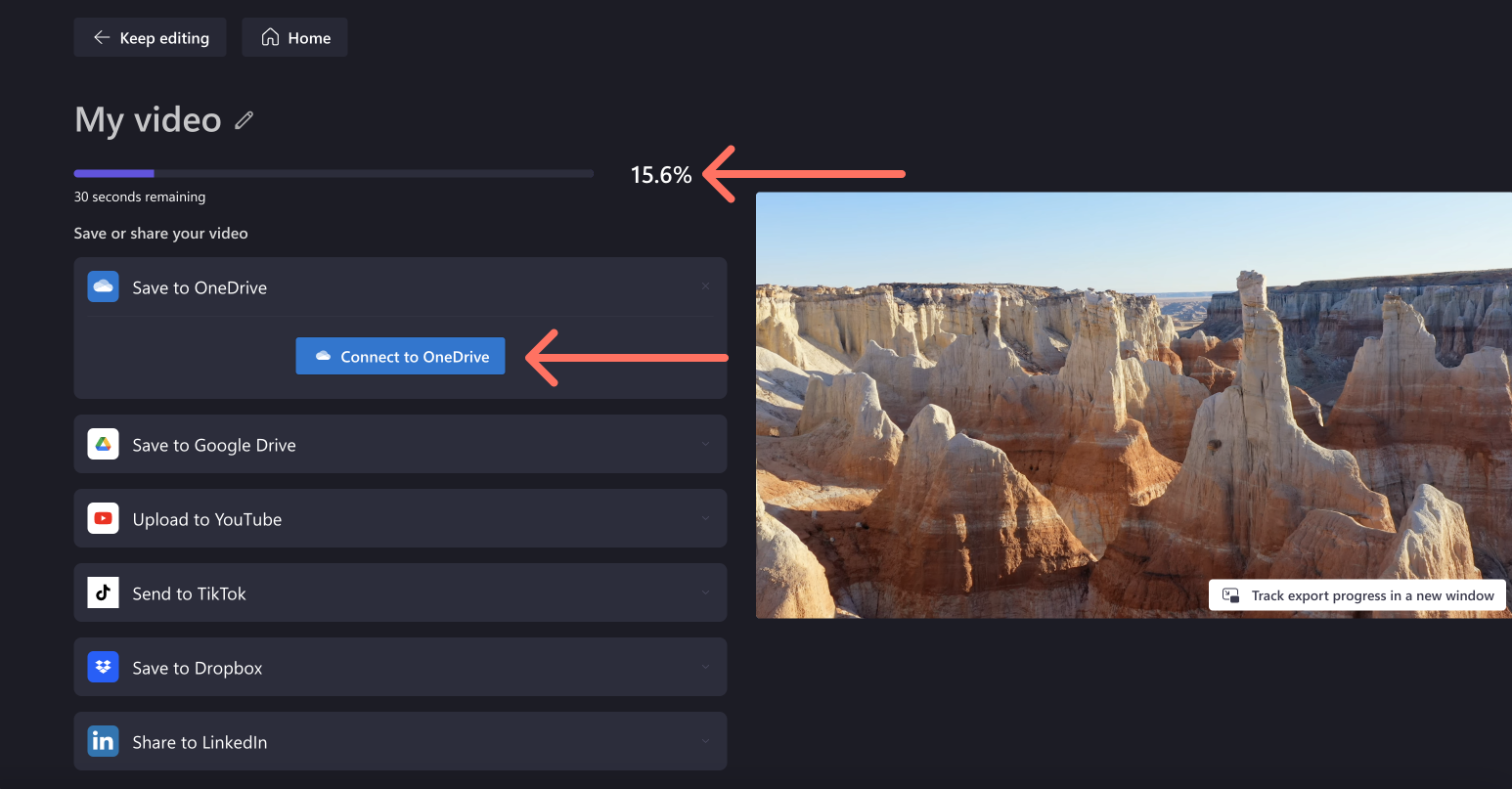
If your video is slow to export or doesn't export, see this help article for tips on how to improve the export speed. Note that higher resolutions or longer projects will take longer to export. After your video has finished exporting, it will automatically save to your computer, usually to your downloads folder.
For more information, see sharing a video.
In Clipchamp for work accounts, it's important to understand the following context:
-
Video editing project files always reside in OneDrive/SharePoint and have the file ending .clipchamp. They are accompanied by an assets and an exports folder.
-
The assets folder contains the media elements used in the project, i.e., the video, image and audio files you've added.
-
The exports folder contains the MP4 videos that get saved there when you're exporting a finished editing project.
-
If you create a video editing project on your OneDrive/SharePoint homepage, in the my files folder or are coming from an external launch point like the Clipchamp page on office.com or Stream, the project is created as a folder under my files > videos > Clipchamp.
-
If you create an editing project in another location, for instance a subfolder elsewhere in your OneDrive, the new project will get created there.
As you work on a project, editing progress gets saved automatically and there is no save button you have to click.
When you're done editing and want to save an MP4 of the finished video, select export in the top right of the editor user interface.
Step 1. Select the export button in the top right of the editor
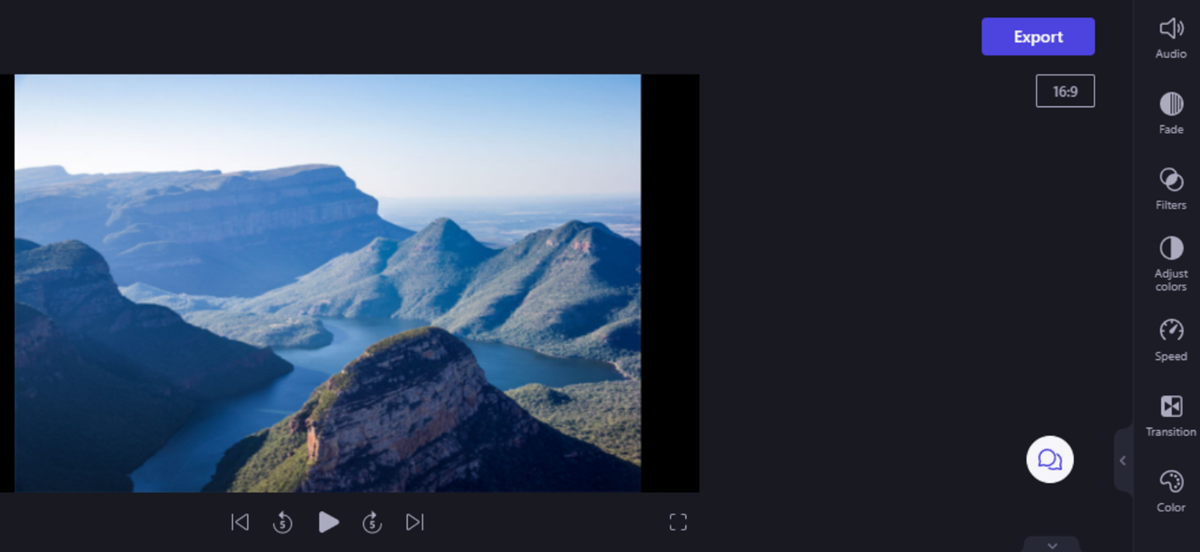
Step 2. Select a resolution and storage location
You'll see a screen where you need to choose your desired video quality.
-
480p video quality is suitable for drafts.
-
720p video quality is suitable for social media videos.
-
1080p (HD) video quality is suitable for video streaming platforms and presentations.
Note: 4K is not available as an output resolution in Clipchamp's work version initially and will get added at a later stage.
By default, exported videos get uploaded and saved in the project's exports folder in OneDrive. You can turn off this option or select another folder to save it in.
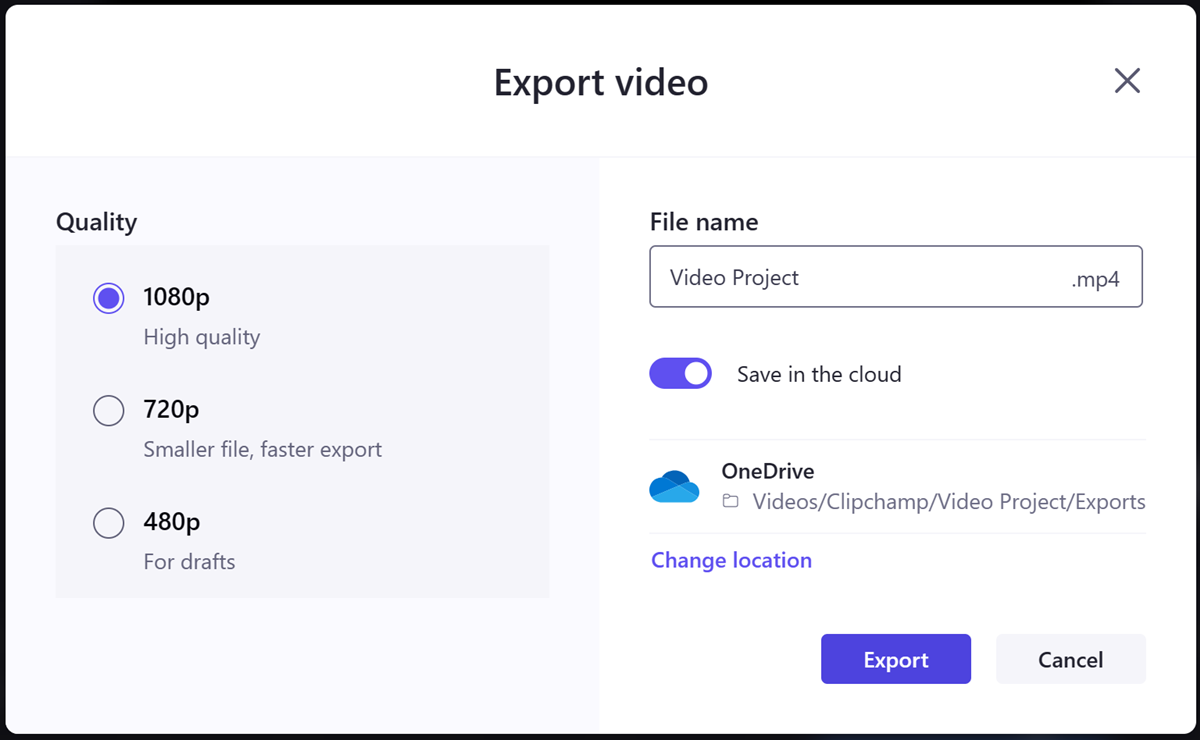
When you're ready, select export to continue.
Step 3. Export your video
The video will start exporting and you'll see a progress bar with a percentage indicator.

If your video is slow to export or doesn't seem to get processed, see this help article for tips on how to improve the export speed. Note that higher resolutions or longer projects will take longer to export.
After your video has finished exporting, it will be automatically uploaded to the exports folder in your work OneDrive/SharePoint unless you turned that option off before exporting.
Step 4. Share the completed video
Next, you can save and share the video file for others to view.
Clipchamp's work version includes the following integrations:
-
Publish with Microsoft Stream
-
Copy link
-
Share with people at your organization
-
Open file location
-
Save to your computer
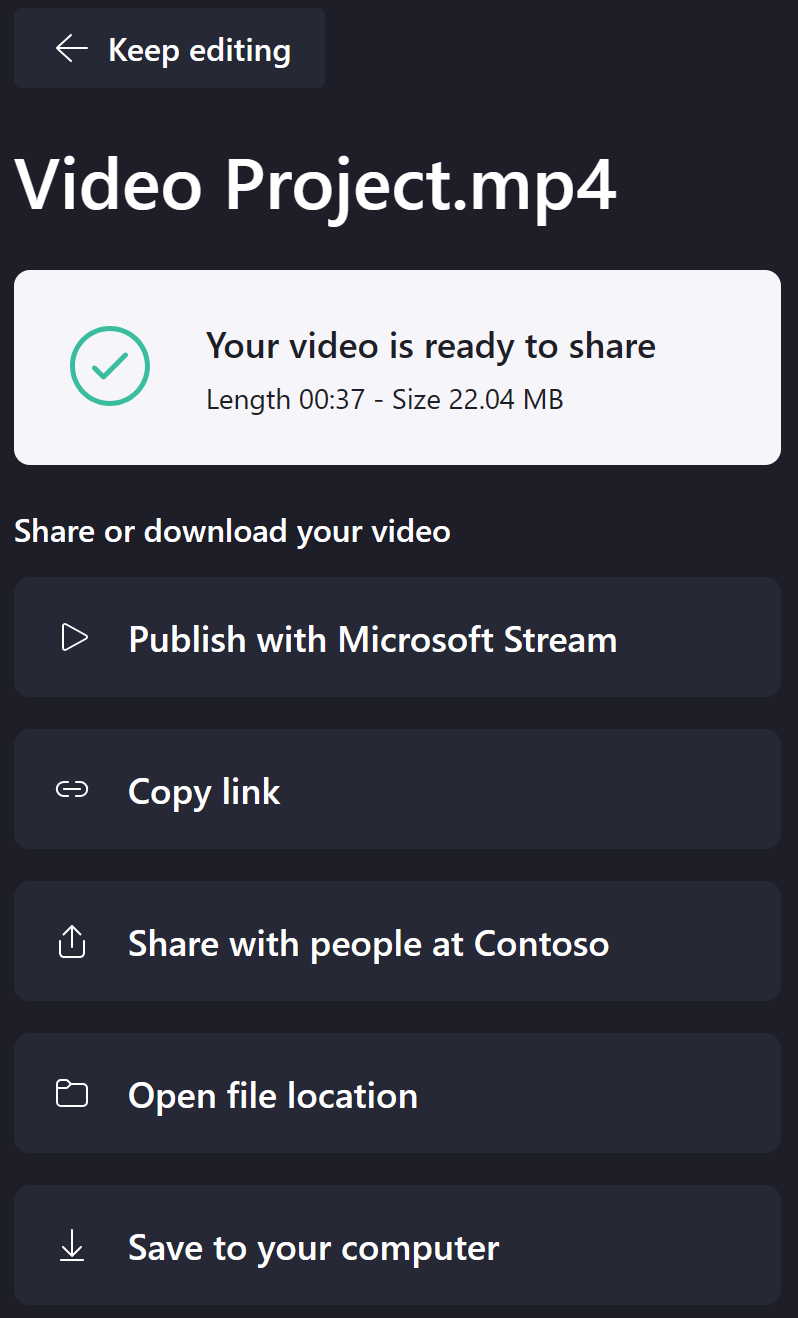
For more information about each of these options, see Sharing a video from Clipchamp.
Export format
Your exported video will be an MPEG 4 (.mp4) file with the file name you chose. The frame rate will be 30fps.
Troubleshooting
If you encounter errors when exporting your video, please see this article for a number of troubleshooting tips that may help you to export successfully.






